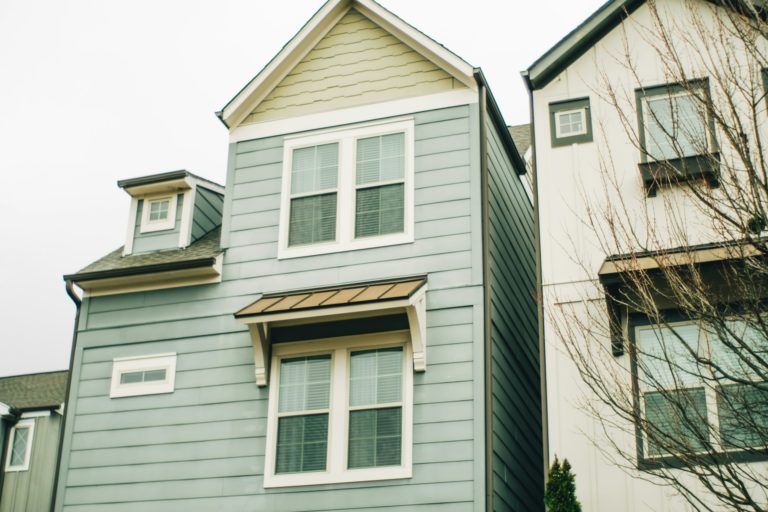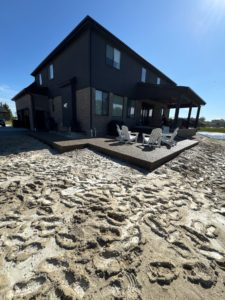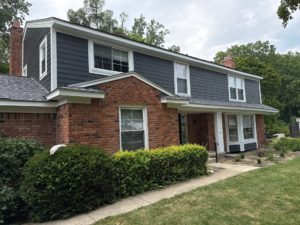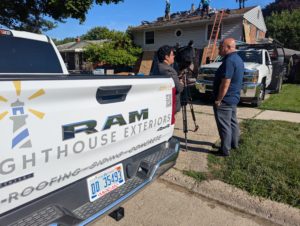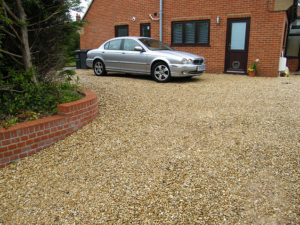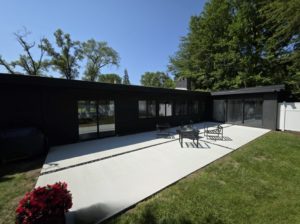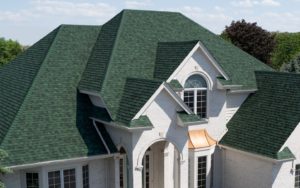Maintaining your home’s exterior is essential for its overall health and value. Among the various siding options, vinyl and James Hardie are two popular choices that often stand out due to their durability and aesthetic appeal. Yet, like any part of your home, they occasionally require some attention and repairs.
In this article, we’ll go over common problems you might encounter with vinyl and James Hardie siding. We’ll also provide you with some handy DIY tips for vinyl siding repairs and reveal the professional techniques used to repair James Hardie siding. Lastly, we’ll give you some preventative maintenance tips to keep your siding looking great for years to come.
Common Issues with Vinyl and James Hardie Siding
Vinyl siding is widely used because it’s affordable and comes in many colors and styles. However, there are some common problems you should watch out for. One major issue is cracking or chipping. Vinyl can become brittle over time, especially in colder weather, causing it to crack or break if something hits it. This damage not only looks bad but can also let moisture seep in, leading to mold and rot.
Another common problem with vinyl siding is discoloration. Over time, exposure to the sun can cause the vinyl to fade or change color. This fading can make your home look older and less attractive. Additionally, vinyl can warp or buckle if it’s not installed correctly or if it’s exposed to extreme temperatures. Warping can create gaps where water can get behind the siding, potentially leading to more severe damage.
James Hardie siding, known for its durability and aesthetic appeal, also has its issues. One of the most common problems is cracking. While James Hardie siding is more durable than vinyl, it can still crack when exposed to severe weather conditions or if it was installed improperly. Cracks can allow water to penetrate the siding, causing damage to the structure of your home.
Moisture-related issues are another concern with James Hardie siding. If the siding is not installed with proper sealing around the edges, water can seep in and cause damage. This is especially problematic if you live in an area with a lot of rain or snow. Keeping an eye on these common problems can help you maintain your siding and prevent bigger issues down the road.
DIY Repair Tips for Vinyl Siding
Fixing minor issues with your vinyl siding yourself can save you time and money. One simple repair you can do is fix small cracks. For minor cracks, you can use a vinyl siding repair kit, which usually includes a patch and special adhesive. Clean the area around the crack, apply the adhesive, and then place the patch over the crack. Press it firmly and smooth out any bubbles to ensure a secure fit.
If you have a piece of vinyl siding that’s damaged beyond repair, you might need to replace it entirely. To do this, you’ll need to remove the damaged piece carefully. Use a siding removal tool called a zip tool to unlock the siding. Slide the tool under the bottom edge of the piece above the one you’re replacing and gently pull it out. Once the damaged piece is free, snap the new piece into place and lock the upper piece back down.
Warped or buckled siding is often due to improper installation. If the siding was nailed too tightly, it might not have space to expand and contract with temperature changes. Carefully loosen the nails and adjust the siding, ensuring there’s some room for movement. Re-nail it without driving the nails all the way in, allowing the siding to move slightly as needed. With these DIY tips, you can keep your vinyl siding in top shape without needing professional help for minor issues.
Professional Repair Techniques for James Hardie Siding
James Hardie siding is known for its longevity, but when it does require repairs, professional techniques ensure the best results. One common repair involves addressing cracks or chips. These can happen due to severe weather or impact. A professional will start by cleaning the damaged area to remove any dirt and debris. Then, they will fill the crack with a color-matched putty or caulk designed specifically for fiber cement siding. Once the filler is dry, sanding it smooth ensures the patch blends seamlessly with the surrounding siding. Finally, the patched area is painted to match the rest of the siding, making the repair nearly invisible.
Another essential repair might involve replacing damaged boards. Professionals take great care to remove the damaged piece without affecting the surrounding siding. They use specialized tools to cut out the damaged section and detach it from the underlayment. The new piece of siding is then cut to size and secured in place, ensuring it fits perfectly with the existing siding. Professionals also check for proper sealing around the edges to prevent moisture intrusion, extending the life of the repair.
Preventative Maintenance to Extend the Life of Your Siding
Taking care of your siding through regular maintenance can prevent many common problems and extend its life. Inspect your siding at least once a year, looking for signs of damage like cracks, warping, or discoloration. Pay special attention to areas around windows, doors, and where the siding meets the roofline. Early detection of issues can save you a lot of trouble and expense in the long run.
Cleaning your siding is another crucial step in maintenance. For vinyl siding, use a mixture of water and mild detergent to wash away dirt and algae. A soft brush or cloth works well to scrub the surface without causing damage. Be sure to rinse thoroughly with a hose to remove any soap residue. For James Hardie siding, you can use a garden hose to clean the surface, but avoid using a pressure washer as it can damage the material.
Conclusion
Maintaining and repairing your siding, whether it’s vinyl or James Hardie, is essential for protecting your home from weather and wear. You can keep your siding in top condition by understanding common problems and knowing when to tackle a DIY project or call in professionals. Regular inspections and preventative maintenance go a long way in extending the life of your siding and avoiding costly repairs.
If you find that your siding needs professional attention or if you have questions about the best methods for maintenance, we’re here to help. At Lighthouse Exteriors, we specialize in roof and siding repair in Michigan. Give us a call to schedule an inspection or consultation. Let’s make sure your home stays safe and beautiful for years to come!

